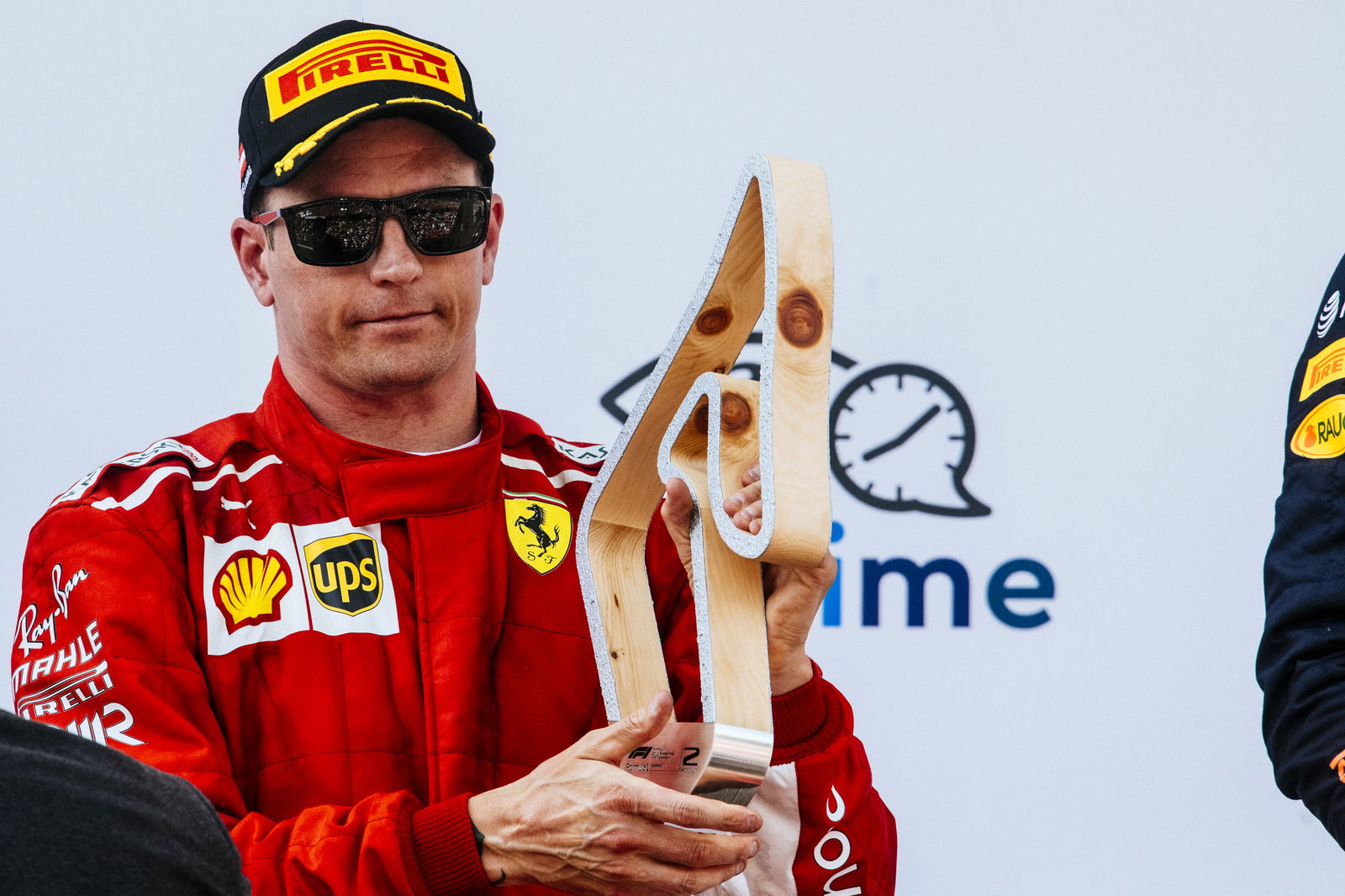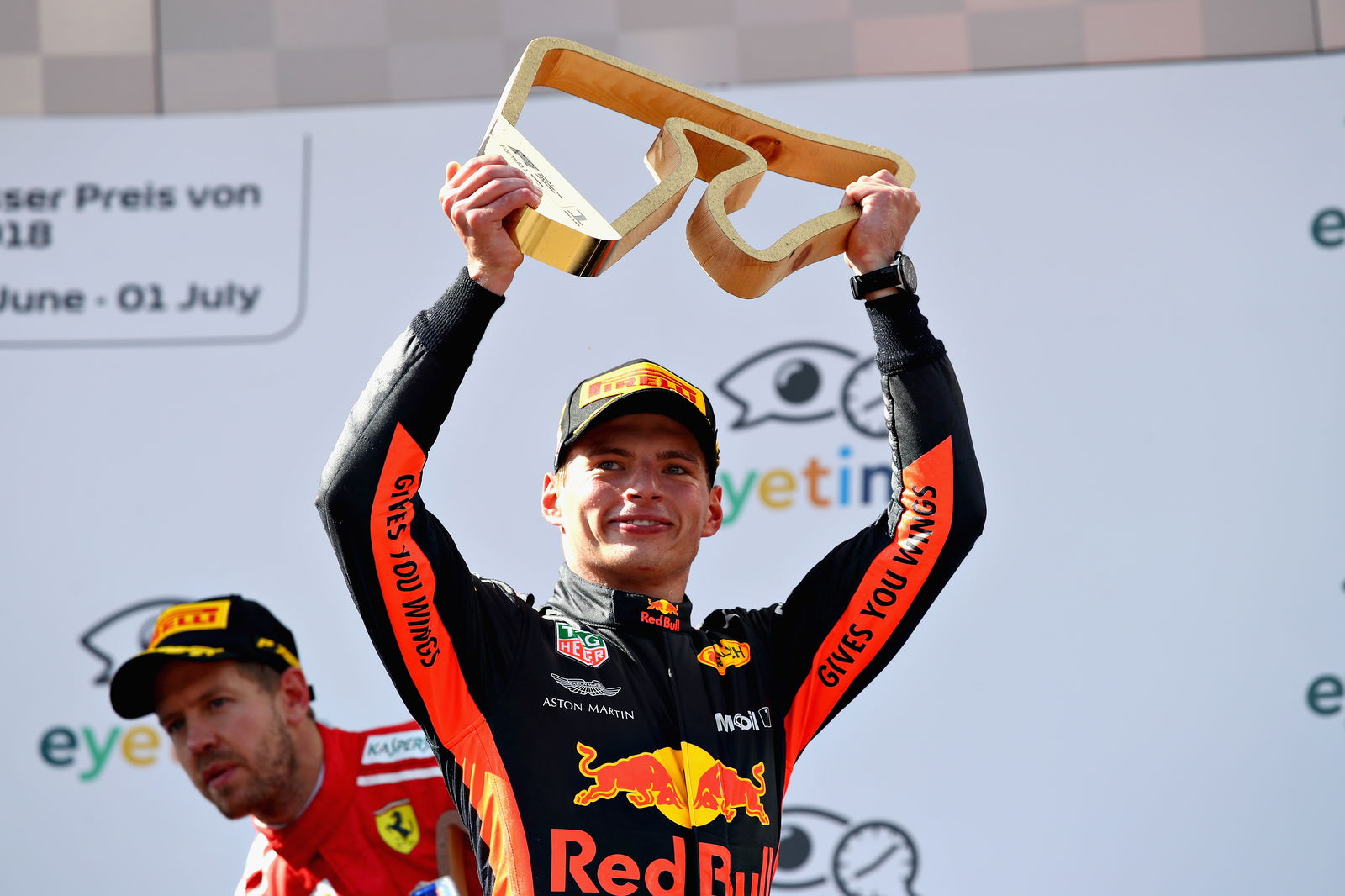F1 Race Analysis: How Red Bull stole victory in its own backyard
It may be tradition to play the national anthem prior to each race starting, but discounting this formality, Austria’s 'Land der Berge, Land am Strome' had not been played to celebrate a home victory since Niki Lauda’s success at the 1984 grand prix.

It may be tradition to play the national anthem prior to each race starting, but discounting this formality, Austria’s 'Land der Berge, Land am Strome' had not been played to celebrate a home victory since Niki Lauda’s success at the 1984 grand prix.
But Sunday saw Max Verstappen claim an unlikely home victory for Red Bull Racing, breaching new ground for the Austrian team - something it rarely does given its title success and winning record. At the track bearing its name and over 13 years since it first lined up on the grid, owner Dietrich Mateschitz could finally celebrate success in Austria.
This was a race that Red Bull had no right to win. After running both Mercedes and Ferrari close in practice on Friday, the team regressed on Saturday, slipping to firmly sit as the third-fastest team. The biggest talking point post-qualifying was the friction between Verstappen and teammate Daniel Ricciardo over who should have given who a tow, but the end result was a disappointing P5 and P7 as Haas’ Romain Grosjean split the pair with a superb effort.
Even in the early part of the race on Sunday, there were few indications that Verstappen would be the man to lift the winner’s trophy on the podium. Kimi Raikkonen was the man to make a rocket start, attempting to part the silver sea ahead at Turn 1, only to then fluff Turn 3 and let Valtteri Bottas back through before slipping behind Verstappen at Turn 7 - from third to second to third to fourth, all in seven corners!
Verstappen’s overtake at Turn 7 would turn out to be the race-winning move. Naturally, no-one could have foreseen that at the time, because as the lap counter ticked over, the race already seemed to be in Mercedes’ hands. P1 and P2 at a track where it had been a cut above the rest of the pack all weekend long. What could possibly stop it?
The answers were strategy and reliability, two of Mercedes’ great strengths throughout its domination of the F1 world through the V6 hybrid era. Even the greats are fallible.
The race began to unravel for Mercedes on Lap 14 when Bottas reported an issue on his car, which turned out to be a loss of hydraulic pressure. The Finn slowed before parking his car up at the side of the track at Turn 4, continuing his luckless run so far this year. Australia was all on him, but China, Baku and here? It’s bad luck. Two wins and a second place tots up to 68 points, some 50 more the scored instead across the three races. His deficit to to new championship leader Sebastian Vettel? 54 points. Food for thought.
If Mercedes had the benefit of hindsight, it may well have told Bottas to park somewhere else, because a Virtual Safety Car period was required to allow his car to be cleared by the marshals. It would prove to be the catalyst for Hamilton’s downfall, with Mercedes not reacting quickly enough and readying its pit crew to come in. Immediately recognising the benefits of pitting with the rest of the pack at slow speed, both Red Bull and Ferrari double-stacked their drivers. The move cost Vettel a position to Kevin Magnussen, who stayed out, yet Ferrari knew it would reap rewards in the long run.
The error quickly became clear for Mercedes. Verstappen had been running seven seconds down the road from Hamilton before the VSC, but after pitting - an exercise typically requiring 20 seconds - he came back out just 13 seconds back. The VSC ended before Hamilton got the chance to respond, putting Mercedes firmly on the back foot.
“What the hell was that?” Hamilton fumed. “How did we miss that? I’ve got no tyre left.” Chief strategist James Vowles then interjected, saying: “It’s my mistake. But give us what you can. There will be opportunities later.”
If Hamilton still wanted to win the race, he either had to a) pull out at least seven seconds over Verstappen before pitting, or b) pit and then pass Ricciardo, Raikkonen and Verstappen on-track. Both were unrealistic asks of the Briton - yet with chief title rival Vettel down in fifth, it wasn’t the end of the world.
Mercedes went for option B to try and limit the damage of the mistake. Hamilton dived in at the end of Lap 25 to take on a new set of Soft tyres to go to the end of the race, mirroring the strategy of the cars around him. He was spat out of the pit lane in fourth, just ahead of Vettel, and was quickly able to pull clear before ramping up the pressure on Raikkonen and Ricciardo ahead. All the while, Verstappen had been able to assume the lead of the race and skip clear at the head of the field, leading a Red Bull 1-2. The orange-swathed grandstands sensed victory was on the cards.

But the drama in the race did not stop there. Pirelli predicted a straightforward one-stop strategy would be quickest for all of the front-runners, regardless of whether they started on Supersofts or Ultrasofts, only for higher temperatures on race day to leave many in the lurch on the Soft tyre. The first to blink was Carlos Sainz Jr., who saw his hopes of points disappear after he was forced to take a second stop just 19 laps into the stint due to massive blistering on the rear-left tyre. Tyres now became the focus.
The slow-motion replays soon showed that Ricciardo had a big blister running through the middle of his tyre, going some way to explain his lack of pace compared to the closing Raikkonen. Hamilton had also dropped back from this fight, falling into the clutches of Vettel. Mercedes has struggled on the softer compounds in particularly hot conditions so far this season, and this was clear once again as Hamilton reported issues over the radio. A second stop looked inevitable.
Ferrari, meanwhile, looked at ease, with Raikkonen getting the better of Ricciardo and Vettel passing Hamilton - the latter being a particularly ballsy move at the inside of Turn 3 - on consecutive laps. Red Bull had no choice but to bring Ricciardo in for fear of losing yet more time, while Hamilton followed suit 14 laps later, coming out just behind the Australian.
Hurried radio calls were made up and down the field as strategists checked in with their drivers to see how their tyres were faring. The coolest of the lot? The 20-year-old leading the race. “I’m absolutely happy,” he said. “No problems.”
Bigger problems were to come for both Ricciardo and Hamilton, with a gear sync issue and a loss of fuel pressure respectively forcing them into late retirements. But neither of them looked capable of winning. Even without the VSC faux pas, Hamilton may well have been in a similar boat keeping his tyres alive. Instead, there are bigger questions to be asked of Mercedes’ reliability post-race, having suffered its first double DNF since Spain 2016 when Hamilton and Nico Rosberg collided on the opening lap.
And in many ways, there are big questions for Ferrari leaving Austria. This is a race it wasn’t really in contention for until Sunday, given Mercedes’ pace, making any kind of championship gain a bonus. To have emerged leading both championships for the first time since Monaco last year? That’s a god-send. But if anyone was going to pick up the pieces from Mercedes, it should have been Ferrari, not Red Bull.
The blame for that lies with Kimi Raikkonen. On a weekend that has seen the headlines be dominated by talk of Charles Leclerc taking his seat at Ferrari next year, Raikkonen did very little to prove why the team should do otherwise. His start was superb, akin to the 2005 Iceman. But from that point onwards? It was back to the same old, same old. Disappointing, underwhelming and, in giving up the position to Verstappen on his scruffy first lap, costly.

Vettel may be team leader at Ferrari, but he should not be left to fly the flag alone at Maranello. When he suffers a setback, as he did on Saturday with the grid penalty for impeding Sainz, he should be able to rely on his teammate to step up and help. It’s what Bottas does for Hamilton at Mercedes. It’s what the Red Bull drivers do for each other. But Ferrari is hugely one-sided. Austria proved that more than ever.
That’s not to take anything away from Verstappen, though, who took a victory that should be taken as an answer to his critics after a rough start to the year. He cut a strikingly different figure on Sunday from the shaken youngster who faced a grilling after qualifying in Monaco following his sixth on-track incident in as many races. He was composed, calculated and clinical, capitalising on the setbacks his peers up front faced.
“I think it was a bit unexpected, especially after our Friday pace and in the long runs,” Verstappen said of the victory after the race.
“I think in the first stint we could actually keep up quite well, and then I just tried to do my own race. I saw Valtteri disappearing with a problem, and then I think we made the right call when the Virtual Safety Car came out, that we pitted. The team, again, great call on that, and then virtually I was in the lead, and I just tried to do my own pace.
“Initially from behind there was no pressure. I think I could build up a gap, and at one point, when Lewis pitted and Kimi started to put Daniel under pressure, and he started to struggle with his tyres. Then once I think Kimi was in second, I tried to manage the gap.
“I could see my tyres also opening up a bit on the rears and the fronts, so, yeah, I just had to drive around the issue and luckily I could manage it until the end of the race.”
Red Bull’s first taste of success on home soil may have come with a generous dose of good fortune - but it still had to be fought for. Verstappen was asked in the post-race press conference about the ‘Verstappen Village’ campsite that had been set up to accommodate the estimated 20,000 Dutch fans who had made the journey to Austria to cheer on their young star, and was grateful for their support.
“I mean of course we’re not playing in the World Cup, so it’s a bit easier for them to come over here… But in general, great support,” he said.
“The whole weekend. It was amazing to see so much orange. And then if you win the race and see all the fans lining up there. It’s incredible. And this is in Austria, which is still 10, 11 hours away from Holland. So, yeah, amazing that they all came over here.”
Spielberg may be pretty secluded in terms of major cities, but if you want the wildest nightlife on Sunday night, the Verstappen Village is probably the place to be as they toast Max’s victory - one that was stolen in Red Bull’s own backyard.


